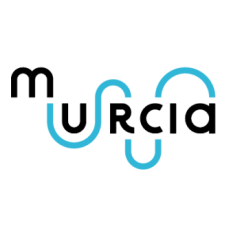
Castle of Lorca
Without a doubt, this is one of the most touristic places in Lorca. The citadel, called “The Fortress of the Sun”, was restored and adapted to become a thematic cultural space with exhibitions, live history scenes, night visits, workshops, and children's spaces, among other activities.
This castle is 52,000 m2, being one of the largest castles in the Iberian Peninsula. Archaeological studies affirm that it was built between the 9th and 15th centuries. Its defensive structure made the city an impenetrable point in the southeast of the Iberian Peninsula. Its strategic location made it a fundamental bastion in the conflicts between Christians and Muslims in the border area of the Kingdom of Granada.
Records allow us to affirm that in the 9th century the Muslims had already become strong on the hill where the castle is located. The castle of Lorca became, during the Islamic rule, an impregnable fortress due to the hill on which it sits. This hill is very steep and allows one to see the entire Guadalentin Valley.
Its interior was divided into halves by the wall of the “Espaldón”. In the western part was the citadel, while in the eastern sector was the Alcala neighbourhood of the Muslim medina. Going down the slopes of the hill, the extensions of the castle walls started, then transformed into a wall that surrounded the neighbourhoods on the slope.
In 1244, the castle passed into Christian hands. It was with the conquest of Lorca by the Infante Don Alfonso de Castilla, who would later be consecrated as Alfonso X, the wise. For more than 250 years, the fortress controlled the border between the Christian kingdom of Murcia and the Muslim kingdom of Granada.
This situation made the area strategic, so the monarchs sought to repopulate it quickly, thus favouring the growth of the region and the strengthening of the castle's defences.
The castle has an elongated shape, one of the most outstanding aspects being its towers: the Alfonsina tower and the Espolon tower.
From the Town Hall Square, which is known as Spain Square, it is possible to get there by following a signposted pedestrian route, which crosses the Saint Mary neighbourhood and reaches the Castle. You can also go to the Castle from Lorca following the Los Pilones road.
This castle is 52,000 m2, being one of the largest castles in the Iberian Peninsula. Archaeological studies affirm that it was built between the 9th and 15th centuries. Its defensive structure made the city an impenetrable point in the southeast of the Iberian Peninsula. Its strategic location made it a fundamental bastion in the conflicts between Christians and Muslims in the border area of the Kingdom of Granada.
Records allow us to affirm that in the 9th century the Muslims had already become strong on the hill where the castle is located. The castle of Lorca became, during the Islamic rule, an impregnable fortress due to the hill on which it sits. This hill is very steep and allows one to see the entire Guadalentin Valley.
Its interior was divided into halves by the wall of the “Espaldón”. In the western part was the citadel, while in the eastern sector was the Alcala neighbourhood of the Muslim medina. Going down the slopes of the hill, the extensions of the castle walls started, then transformed into a wall that surrounded the neighbourhoods on the slope.
In 1244, the castle passed into Christian hands. It was with the conquest of Lorca by the Infante Don Alfonso de Castilla, who would later be consecrated as Alfonso X, the wise. For more than 250 years, the fortress controlled the border between the Christian kingdom of Murcia and the Muslim kingdom of Granada.
This situation made the area strategic, so the monarchs sought to repopulate it quickly, thus favouring the growth of the region and the strengthening of the castle's defences.
The castle has an elongated shape, one of the most outstanding aspects being its towers: the Alfonsina tower and the Espolon tower.
From the Town Hall Square, which is known as Spain Square, it is possible to get there by following a signposted pedestrian route, which crosses the Saint Mary neighbourhood and reaches the Castle. You can also go to the Castle from Lorca following the Los Pilones road.
Location
Civil Architecture in Lorca
Religious Architecture in Lorca
Museums in Lorca













